Anduril’s new cruise missile concept could be a boon for American airpower
- By Alex Hollings
Share This Article
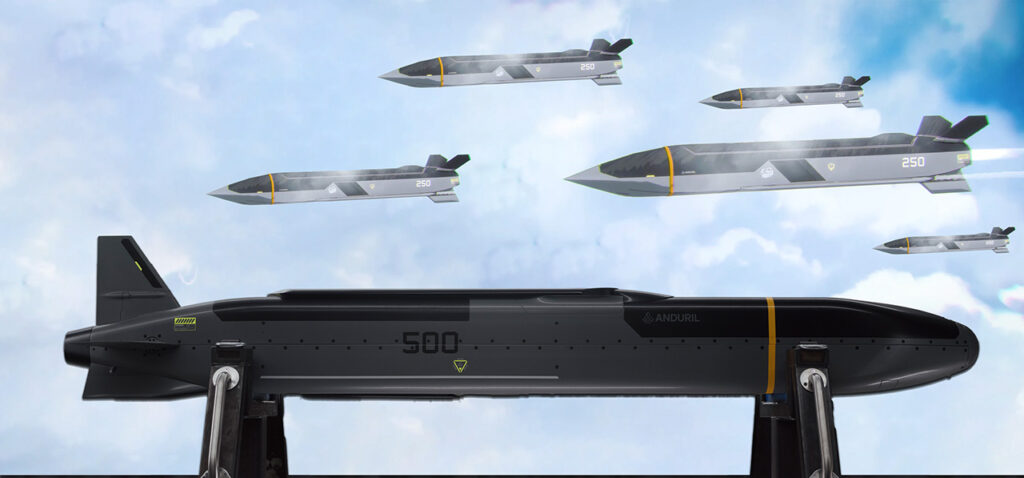
Last week, California-based Anduril Instrustries unveiled their new Barracuda family of cruise missiles which are meant to address one of America’s most pressing strategic shortcomings: its inability to produce munitions in sufficient numbers to sustain a large-scale conflict in the 21st century.
These new weapons could feasibly be described as one-way drones or air-breathing cruise missiles. They come in three variations depending on the range and payload required for the job, with the largest and most capable iteration meant to serve in a similar role to Lockheed Martin’s AGM-158 family of low-observable cruise missiles – including in cargo aircraft via the Air Force Research Laboratory’s Rapid Dragon palletized launch system.
The real claim to fame for the Barracuda family is Anduril’s ability to mass-produce these missiles for low cost and rapidly expand production to meet the military’s needs using a methodology the company calls “hyper-scale production.”
“A single Barracuda takes 50 percent less time to produce, requires 95 percent fewer tools, and 50 percent fewer parts than competing solutions on the market today,” the company said in press materials. “As a result, the Barracuda family of AAVs is 30 percent cheaper on average than other solutions, enabling affordable mass and cost-effective, large-scale employment.”
According to Anduril’s press release, its “hyper-scale” approach would allow the firm to double production capacity on demand, using a combination of modular systems across different versions of the missiles, automated manufacturing, and simplified assembly that can be completed with just a handful of tools and minimal training.
The pressing need for cruise missile stockpiles
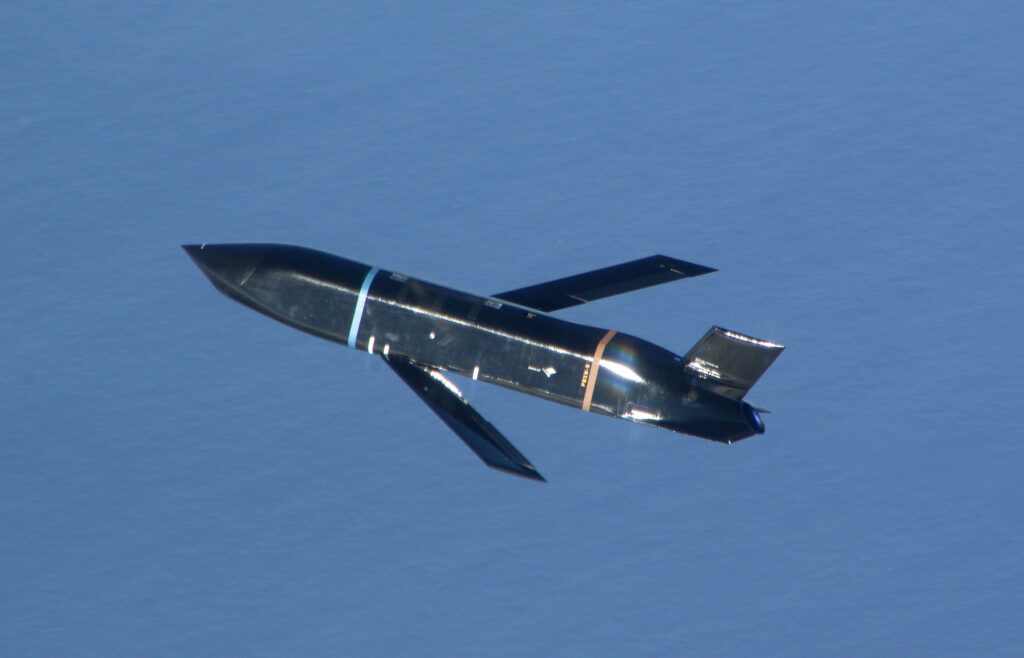
While the ongoing war in Ukraine has provided the West with a stark reminder of the importance of industrial capacity in large-scale conflicts, the need for larger stockpiles of modern cruise missiles, in particular, has for years been the subject of discussion surrounding a potential Pacific conflict.
Unlike ballistic missiles, which tend to be powered by liquid or solid-fueled rockets and travel along predictable arcing ballistic flight paths, cruise missiles operate more like tactical aircraft or suicide drones. Powered by air-breathing jet engines, like turbojets or turbofans, cruise missiles fly along fairly horizontal flight paths, like any other jet-powered aircraft, allowing them to change course to avoid heavily defended airspace while minimizing detectability by hiding behind the curvature of the earth and even the terrain during their approach.
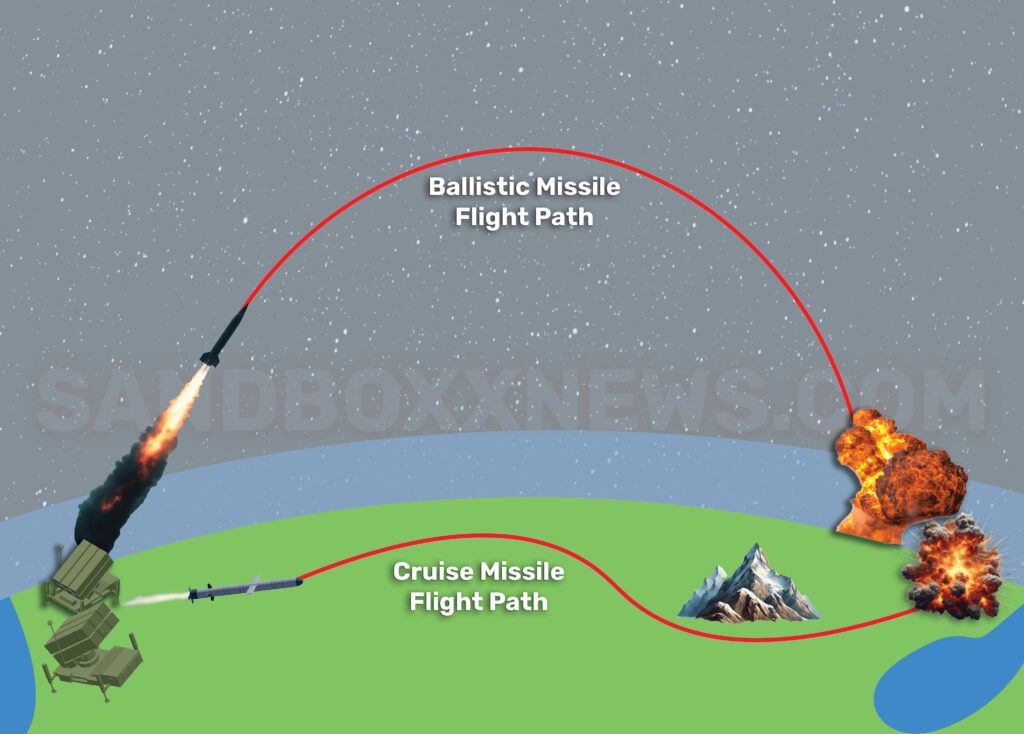
While supersonic cruise missiles are not unheard of and today several hypersonic cruise missiles are in active development, most in-service cruise missiles, including the aforementioned AGM-158 JASSM family of weapons and the ship-launched Tomahawk, rely on their stealth and maneuverability to close with their targets at subsonic speeds.
In the past, Sandboxx News has argued that, in particular, one member of the JASSM family could play a pivotal role in defending Taiwan against a Chinese invasion – the AGM-158C Long Range Anti-Ship Missile (LRASM). Yet, ironically, this weapon also serves as a perfect example of the production challenges Anduril’s Barracuda family aims to overcome.
As the Center for Strategic and International Studies (CSIS) pointed out after it wargamed American intervention into such a conflict, the United States could expect to have as many as 3,650 land-based AGM-158B JASSM-ER cruise missiles in service by 2026, but only around 450 of its ship-hunting sister missile, the LRASM. With so few LRASMs in service, the CSIS wargames saw the U.S. expend its entire inventory of these weapons within just the first week of fighting in each of the 24 wargame iterations they played out.
While the United States has several other anti-ship weapons in its arsenal, these long-range cruise missiles are among its most valuable, as they offer the range necessary to keep the launching aircraft outside the reach of enemy air defenses.
“I think one of the most glaring gaps in our portfolio is anti-ship weapons, especially air-launched ones, and LRASMs are particularly important since it gives you the ability to attack from standoff,” Stacie Pettyjohn, director of the defense program at the Center for a New American Security, told Air & Space Forces Magazine last year.
Related: Lockheed Martin’s new hypersonic missile can fit inside the F-22
It’s also important to keep in mind that, while LRASM numbers would dwindle first, America’s multiple-thousand AGM-158 JASSM and AGM-158B JASSM-ER numbers may also begin to run out only months into a large-scale fight. As one Rand Corporation analysis assessed in 2021, the United States expended 115,983 mostly precision-guided munitions between 2014 and 2019 in its fight against the Islamic State alone, leading to a shortage of these weapons that stretched out for years after.
And as Air Force Acquisition Chief Will Roper explained in 2019, the limiting factor in replenishing those stocks was “the capacity to make them.”
With this very concern in mind, the Pentagon’s 2024 budget included provisions that aimed to double Lockheed Martin’s production capacity for the AGM-158 family of missiles, increasing from 500 per year to 1,000.
But at upwards of $3 million per LRASM and the technological complexity of these weapons only increasing with each subsequent iteration, the solution to America’s production capacity problem won’t be found on the JASSM line alone.
As Pettyjohn put it, “We do need to find ways to buy larger quantities of more affordable weapons.”
And that seems to be precisely what Anduril has in mind. As Anduril chief strategy officer Chris Brose explained in recent weeks, the firm believes the United States would need at least ten times its current stockpile of cruise missiles to effectively deter China, or barring that, to ensure the U.S. doesn’t “run out of stuff to shoot” within the first few weeks of such a war.
Speaking to Sandboxx News via e-mail this week, Anduril’s Communications Manager, Jackson Lingane, explained that the Barracuda-M production baseline would be in the neighborhood of multiple thousands per year, with the ability to double production capacity on short notice when the need arises.
The new Barracuda family of cruise missiles

Anduril’s Barracuda family of weapons, known as Barracuda-M, is made up of three different platforms with a great deal of commonality between them; dubbed Barracuda-M 100, 250, and 500. All three of these weapons are powered by small air-breathing turbojet engines, giving each a great deal of range and a reported top speed of some 500 knots (about 575 miles per hour).
Each iteration was designed specifically to minimize the complexity of production. Anduril claims each of these weapons can be assembled using ten tools or fewer, leveraging primarily commercially available components to minimize logistical bottlenecks, and designed for easy assembly with minimal training. This, combined with modular systems shared across iterations, is meant to make standing up new production lines faster and cheaper than previous weapon designs, while the designs’ modularity and open system software architecture allow for rapid upgrades with minimal interruption to production.
Anduril aims to make these high-performance cruise missiles with simple but robust hardware, allowing for most upgrades or improvements to be made through software changes alone, further minimizing the impact of these changes on their production lines.
“These are systems that can be assembled with tools, literally that you probably have in your garage—screwdrivers, pliers, things of that sort, so it is not gated in terms of its producibility on highly specialized tooling, highly specialized manufacturing processes, highly specialized labor, none of which we’re ever going to have enough of,” explained Diem Salmon, Anduril’s vice president for air dominance and strike. “It’s been designed with the exact opposite approach, which is, I have to leverage commercial supply chains as much as possible. I have to make the weapon as simple to produce and as simple to assemble as possible.”
And while this program was only just revealed, we’ve learned that Anduril and the U.S. Air Force already have these weapons in testing. According to Anduril, they’ve been conducting independent
research and development (IRAD) testing of all three units for years already, including end-to-end flight testing of the M-500.
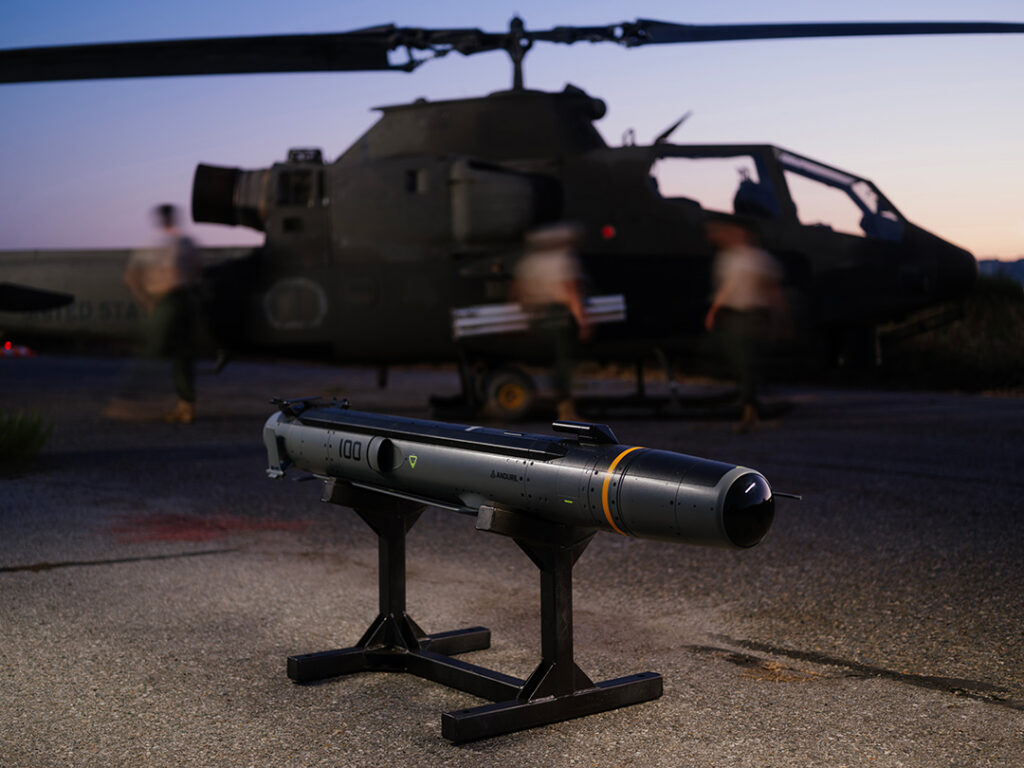
The first and smallest of these weapons is the Barracuda 100. This weapon (or one-way drone) measures 70 inches in length, with a diameter of 6 inches and an overall weight of roughly 110 pounds, including a 35-pound payload. When launched from a rotorcraft like the AH-64 Apache or a fixed-wing asset like the C-130, Anduril claims a whopping range of some 85 nautical miles (about 98 miles).
For a frame of reference, that means this weapon is only about 6 inches longer than a standard rocket-propelled Hellfire missile, with a one-inch smaller diameter and roughly the same weight – but the Barracuda-M 100 offers a warhead nearly twice the size and an astonishing 12 times the range. This added range and firepower could be a significant boon for platforms like the Apache, allowing it to engage targets from further away, limiting its vulnerability to anti-air fire.
Related: Why did the Army scrap its $2.4 billion FARA helicopter?
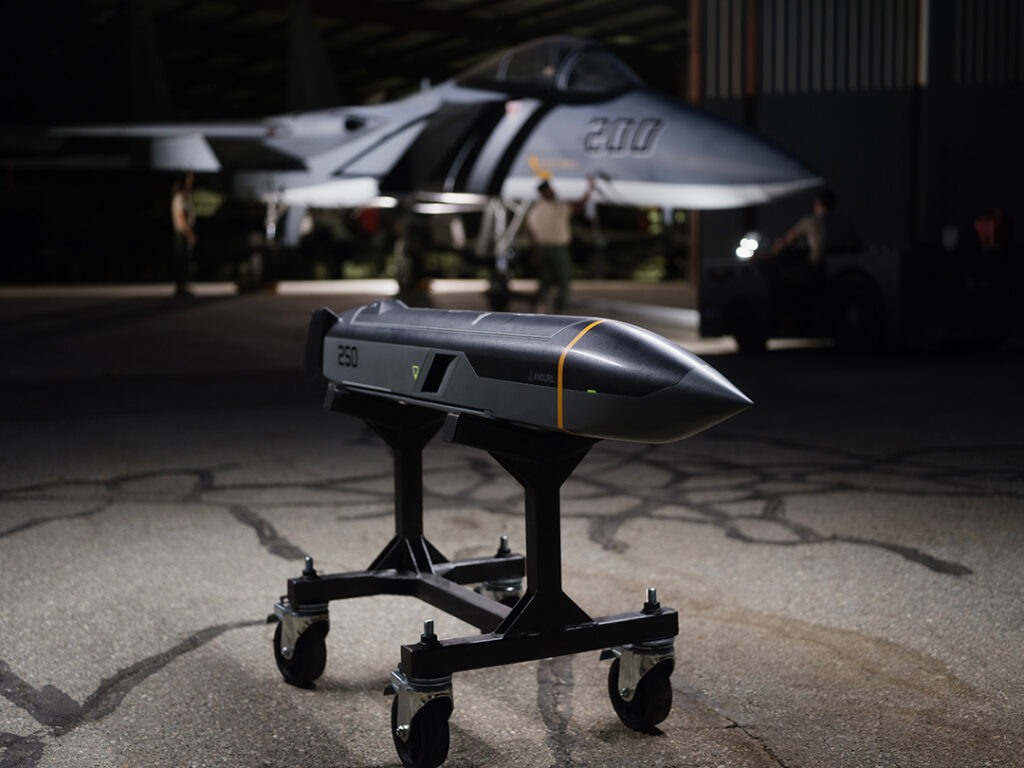
The larger Barracuda-250 is rated to carry the same 35-pound payload, but with a significant boost in range out to more than 200 nautical miles (about 230 miles) when launched from aircraft. In an air-launched profile, this weapon is also only 70 inches long, less than half the length of an AIM-120 AMRAAM. At 7 inches in diameter, the M-250 weighs in at a paltry 200 pounds.
This means the Barracuda M-250 can be carried internally by all three variants of the F-35 (including the F-35B with its slightly smaller payload capacity), or externally on fighters like the F-15, F-16, and F/A-18.
While a 35-pound warhead may not seem all that large, it is roughly three times the explosive power of a standard 155mm Howitzer projectile and nearly twice that of a Hellfire Missile, meaning it offers more than enough oomph to have a significant battlefield effect. But, if the 250 isn’t enough, you could opt for the largest of Anduril’s new cruise missile offerings, the Barracuda M-500.
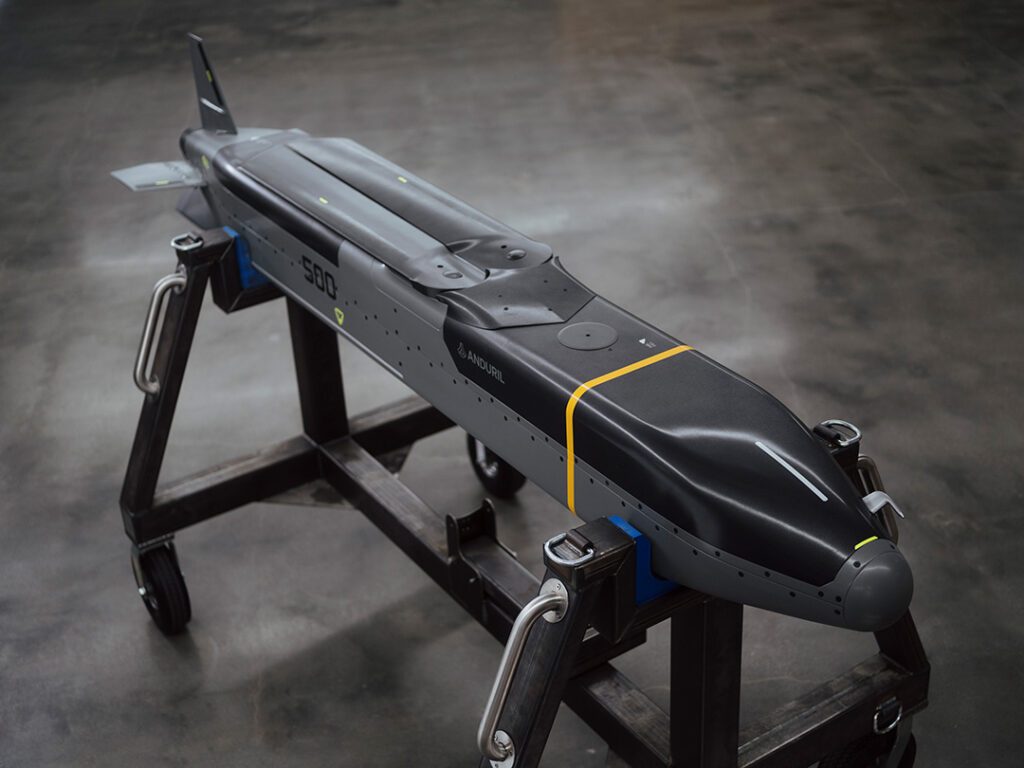
Unlike the 100 and 250, the Barracuda M-500 can carry a 100-pound warhead to targets more than 500 nautical miles (~575 miles) away. This much larger weapon stretches a full 13 feet, with an 8-9 inch diameter and a total weight of around 400 pounds. That makes this weapon about one foot shorter and roughly 1,851 pounds lighter than a standard JASSM cruise missile.
According to Anduril, the Barracuda-500 can perform 5 G+ maneuvers along the way to its target and can even loiter for upwards of 120 minutes before ultimately engaging, which could be especially valuable if carrying an electronic warfare or surveillance payload, rather than a kinetic one.
And we now know that the M-500 was purpose-built for the Air Force Research Lab’s Rapid Dragon palletized missile launch system, which allows cargo aircraft like the C-130 and C-17 to deploy large volleys of JASSM-type cruise missiles in short order.
Just last week, on September 12, Aduril conducted a successful flight test of Barracuda-500 as part of the initial test phase of the Air Force Armament Directorate (EB) and Defense Innovation Unit’s (DIU) Enterprise Test Vehicle (ETV) program. This test saw the weapon launched from a vertical cell meant to emulate “palletized employment” like the Rapid Dragon launch system.
This test demonstrated the weapon’s ability to launch, extend its wings, establish guidance, and fly autonomously for roughly 30 minutes – including some aggressive maneuvering – before ultimately scoring a direct hit on a 48-inch by 40-inch target.
While our sources at Anduril could share these details with us, they said they are currently working through Air Force approvals to release photos and videos from the test.
Introducing the Barracuda to Rapid Dragon
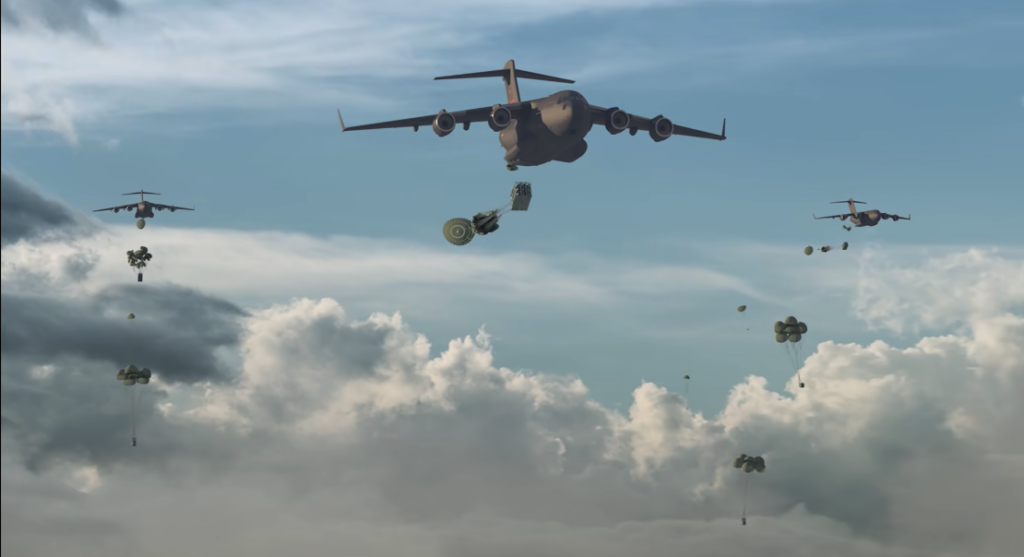
The Air Force Research Lab’s Rapid Dragon program is a palletized missile launch system designed to enable C-130s or C-17s to launch a large volume of low-observable cruise missiles from stand-off ranges.
It includes a modular palletized munition system that allows for stacks of six missiles per pallet in the C-130 and as many as nine per pallet in the larger C-17. These pallets were designed to accommodate the AGM-158 family of weapons, including the original JASSM, the longer-ranged JASSM-ER, and the ship-hunting LRASM. The C-130 can accommodate two pallets of six weapons, allowing it to rapidly launch as many as 12 cruise missiles, whereas the massive C-17 can carry five pallets of nine missiles each, allowing a single Globemaster to launch 45 weapons in extremely short order.
The pallets are rolled out the back of the aircraft like any other airdrop. Once deployed, a parachute opens to stabilize the pallet as the onboard control system fires the missiles to begin their trek of more than 500 miles (and potentially greater than 600) to their targets where they will deliver 1,100-pound explosive warheads to land or sea targets.
As Sandboxx News has covered numerous times in the past, Rapid Dragon provides several significant advantages, including freeing up tactical aircraft for more complex operations; an extremely low cost per weapon launched; and the sheer volume of weapons it can flood enemy airspace with… But Rapid Dragon does face one significant problem: having enough weapons to launch.
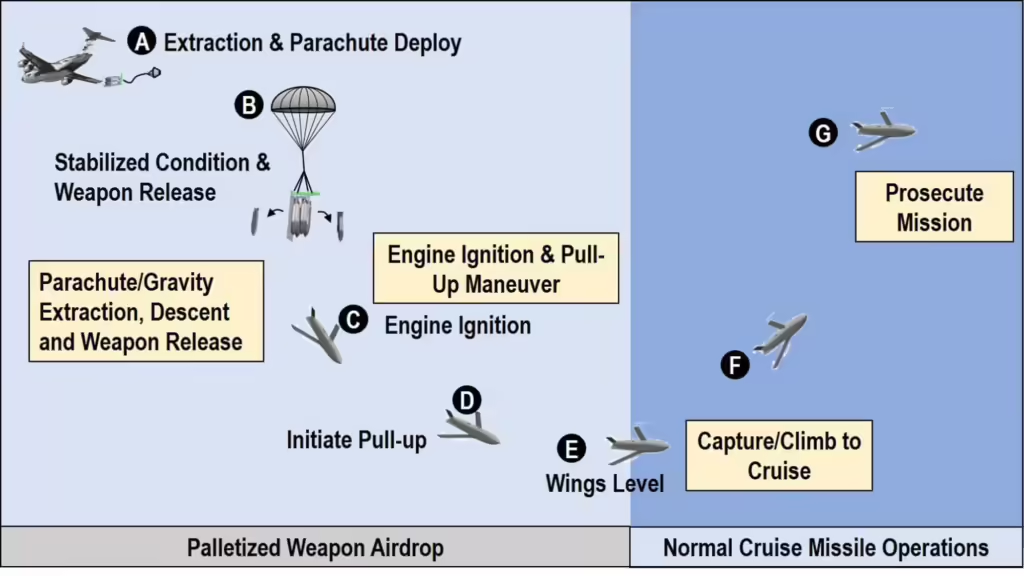
With as few as just 450 LRASMs in service by 2026 (though that figure is likely to be higher), a single C-17 could expend America’s entire stockpile of these weapons in just ten sorties. America’s much larger stockpile of land-attack JASSM-ERs, projected to be around 3,600 by 2026, would take much longer, but could still be expended in just 80 C-17 Rapid Dragon sorties. Of course, that is an immense amount of firepower, but in a conflict with a military the size of China’s People’s Liberation Army, there would be no shortage of targets.
And that’s where the Barracuda-500 could truly shine. As Salmon explained, the Barracuda-500 is, in fact, meant to be “cargo-launched” from the same Rapid Dragon cargo pallets. This, Salmon points out, would also alleviate the need to integrate these missiles into other aircraft – a process that adds time and expense to the rollout of any new weapon system.
Related: How much does it cost to train an Air Force pilot? A LOT
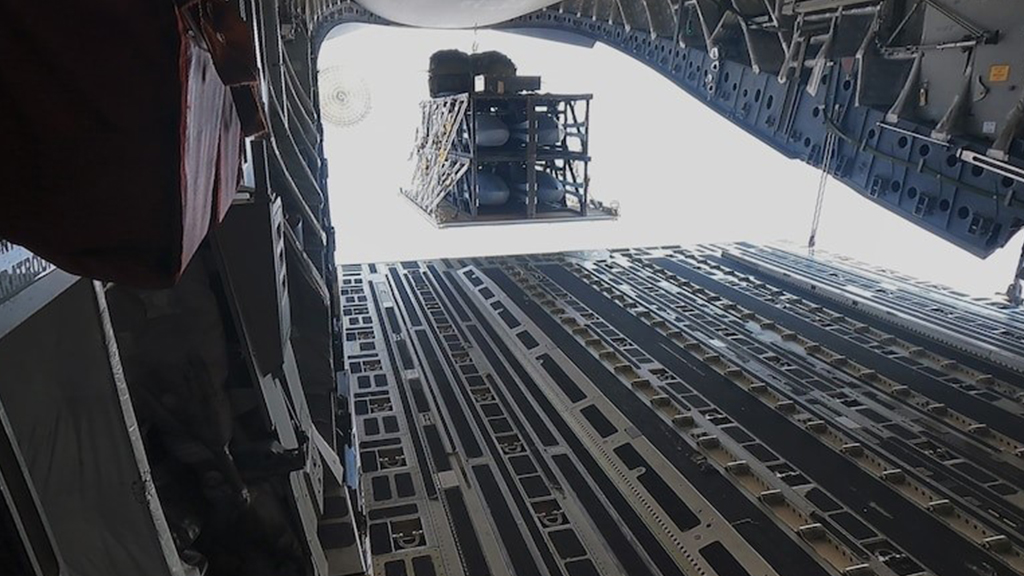
The modularity of these systems could also help to improve their chances of success. As Anduril’s Jackson Lingane told Sandboxx News, “Since Barracuda can be configured with a range of payloads, you could send one Barracuda variant equipped with an EW payload forward to distract adversary air defenses, clearing a path for Barracuda-M variants equipped with munition payloads to reach their targets.”
With just a 100-pound warhead, the Barracuda-500 would not be able to engage the same sorts of targets as the JASSM-ER’s 1,000-pound WDU-42/B penetrating blast fragmentation warhead, but importantly, not every target requires that much explosive power.
The aforementioned AGM-114 Hellfire missile, for instance, is a broadly useful weapon system despite carrying only a 20-pound blast fragmentation warhead – one-fifth the size of the Barracuda-500s. Other common air-to-ground munitions employed by the United States carry similar payloads, like the AGM-88 HARM’s 150-pound warhead or the early AGM-65 Maverick’s 126-pound shaped charges.
Using the Barracuda to hunt for enemy ships

Despite its limited warhead size, there is also a reasonable argument to be made for the M-500 to serve in a limited anti-ship capacity.
The Barracuda-500’s 100-pound warhead would likely be seen by most Navy leaders as insufficient for anti-ship duties. Traditionally speaking, the rule of thumb for anti-ship weapons tends to be that the amount of thousand-pound-bomb equivalents required to disable a warship is approximately equal to the cube root of one-thousandth of a ship’s tonnage. As such, the U.S. Navy tends to prefer larger anti-ship warheads of 500 pounds or more.
But the Barracuda could still prove to be a potent ship-hunting system, if it can overcome a bit of cultural inertia.
Anti-ship weapons have some very specific guidance system requirements, as identifying and closing with a moving warship against the vast backdrop of the open ocean is no small undertaking. When we asked Anduril’s team if the modular M-500 could be equipped with guidance systems capable of accomplishing this feat, they answered simply, “yes, absolutely.”
On April 14, 2022, Ukrainian forces sank the flagship of Russia’s Black Sea Fleet, the 9,380-ton guided-missile cruiser Moskva, with just two Neptune anti-ship missiles, each carrying fairly small 330-pound warheads. Media reports suggest the Neptune impacts may have caused a secondary explosion of a large missile housed inside the ship, resulting in it going down just hours later. Based on that traditional rule of thumb, it should have taken at least three Neptune cruise missiles to bring the warship down.
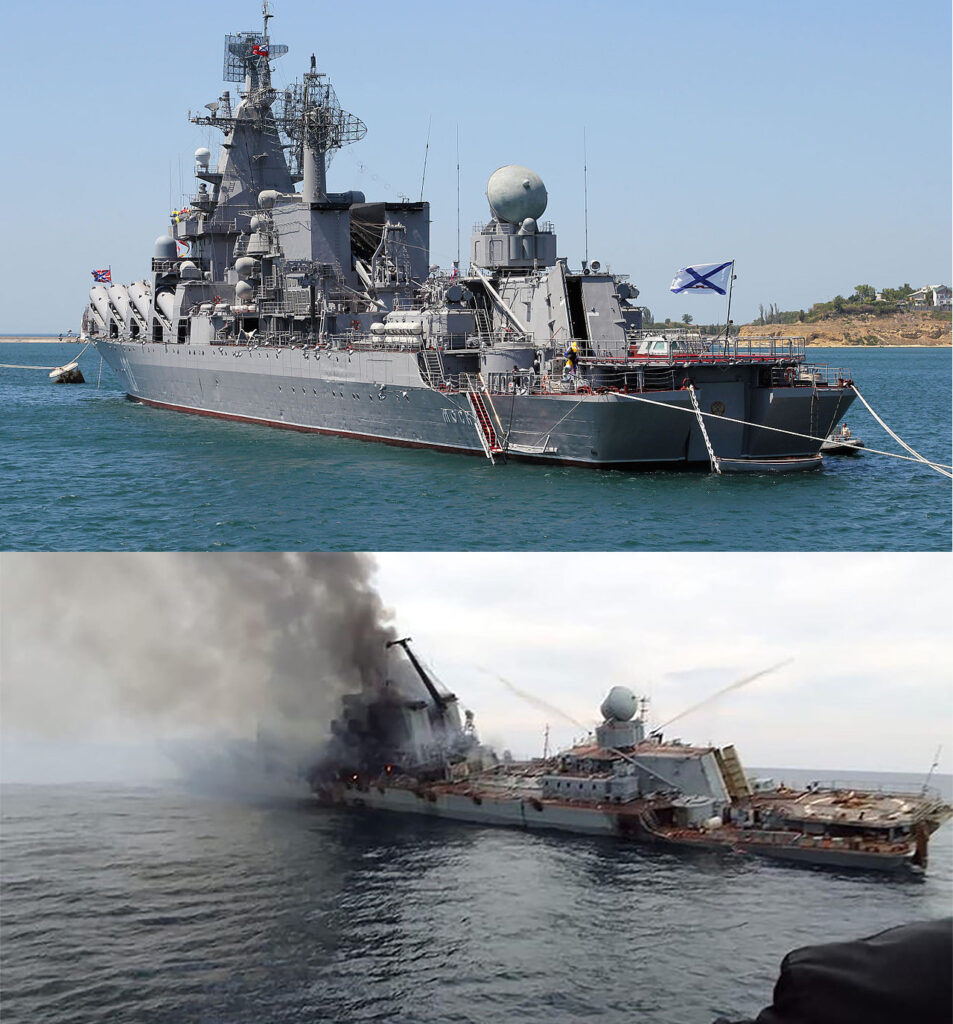
As retired U.S. Navy Commander Alan D. Zimm explained in 2022, the anti-ship weapon rule of thumb is wrong for two important reasons. First, it fails to consider the impact of fire damage caused by a warhead’s detonation and the toxic gasses that accompany such fires. And second, modern ships are more densely packed with explosive materials and tend to be less heavily armored than the World War II-era vessels this rule was based on. Zimm contends that precision guidance can dramatically offset warhead size by specifically targeting vulnerabilities in a ship’s armor or essential systems.
“When I stood watch in CIC on a nuclear-powered cruiser some years ago, during the quiet mid-watches, for training, we would play the ’22 Game.’ Each watchstander was assumed to have a 22-caliber pistol (virtually, of course), and two rounds. The object of the game was to determine where to shoot those two rounds to cause the maximum damage to the ship’s warfighting capability,” Zimm wrote in Proceedings. “The resulting arguments were fierce, informative, and shocking—my sailors found ways to shut down the ship nearly completely with two puny bullets.”
As Zimm sees it, longer range is more useful in modern anti-ship weapons than larger warheads, which is precisely what the Barracuda-500 would offer.
Adding Barracudas to a much larger family of weapons and platforms
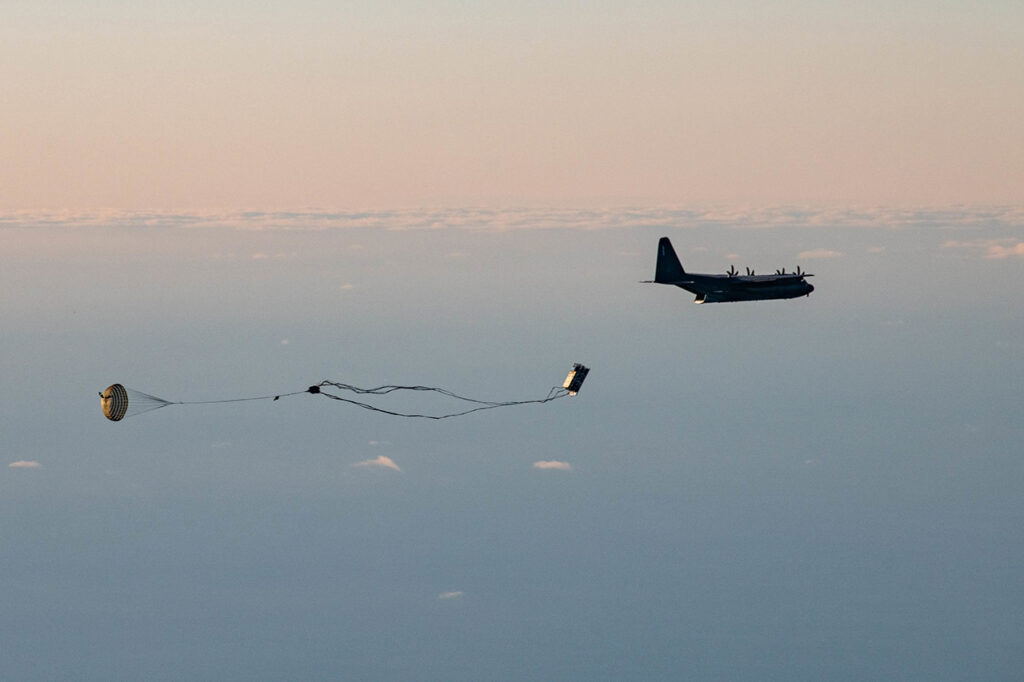
In a Pacific conflict in the near future, Rapid Dragon-equipped cargo aircraft carrying pallets of LRASMs and JASSM-ERs programmed to engage adversary warships and hardened ground targets could be bolstered by a large number of cheaper Barracuda M-500s launched from the same pallets, dramatically increasing the overall number of targets saturating enemy airspace at the onset of the attack, and dramatically complicating matters for air defenders trying to keep these weapons from finding their targets.
These broadly-capable M-500s could be tasked with engaging warship communication systems, radar arrays, and other vulnerable systems, or to engage land-based command and control elements, armor, and more. Other Baracuda-500s could provide electronic warfare support, ISR (intelligence, surveillance, and reconnaissance) for follow-on strikes, or real-time battle-damage assessments as the fight plays out.
Combine this swarm of stand-off munitions with electronic warfare attacks mounted by carrier-based EA-18G Growlers carrying Next-Generation Jamming Pods, swarms of ADM-160 Miniature Air Launched Decoys broadcasting the radar returns of B-52 bombers and F-15e Strike Eagles, and waved of stealthily F-35Cs launched from carriers and B-21 Raiders closing with Chinese shores from across the globe, and you have the recipe for a chaotic environment full of real and imagined threats that would rapidly saturate and overwhelm even the most advanced and capable integrated air defense system China’s yuan could buy.
By supplementing the JASSM family of weapons with Barracudas, America’s high-end cruise missile stockpiles would last longer, making it more feasible to replenish stores with strategically viable timelines, with rapidly expanding Barracuda production lines providing a steady supply of stand-off weapons that may not pack the power to engage hardened targets, but offer more than enough to wreak havoc on surface-based command and control assets, enemy armor, and more.
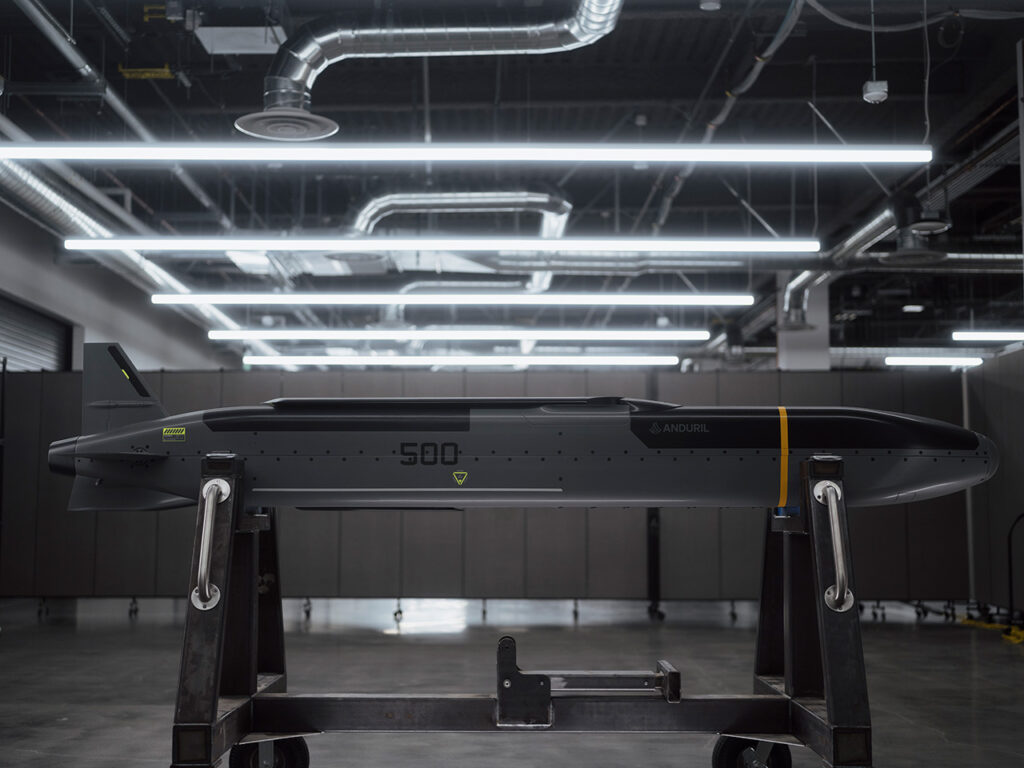
Put simply, the Barracuda-500 could be thought of as a JASSM-junior: It’s not as capable, but at the same time, it’s not as expensive and can be deployed in much greater volume, providing Uncle Sam with the high-low mix of standoff munitions it would need to keep fighting for as long as it took to secure victory.
Or… at least that’s Anduril’s plan. While the firm does say that test articles of all three Barracuda variants are already flying, these weapons are still very much theoretical. Whether or not they move into production and operational service is a question the Pentagon will likely address in the months or years ahead, and until the program begins to mature toward such a contract, this is all little more than a hypothetical thought exercise.
But admittedly, it’s one with a great deal of promise. As for whether or not Anduril can deliver on that promise. You can rest assured that we’ll be watching closely.
Read more from Sandboxx News
- The Air Force wants drones on steroids to accompany its future fighters
- The British military’s new elite unit is receiving one of the best rifles in the world.
- New Museum of the Marine Corps galleries engage multiple senses to simulate combat environments
- These are the pistols that America’s generals carry
- The Intelligence Support Activity – one of America’s most secretive special operations units
Related Posts
Sandboxx News Merch
-

‘AirPower’ Classic Hoodie
$46.00 – $48.00 Select options This product has multiple variants. The options may be chosen on the product page -

‘Sandboxx News’ Trucker Cap
$27.00 Select options This product has multiple variants. The options may be chosen on the product page -

‘Kinetic Diplomacy’ Bumper Sticker (Black)
$8.00 Add to cart

Alex Hollings
Alex Hollings is a writer, dad, and Marine veteran.
Related to: Airpower, Gear & Tech
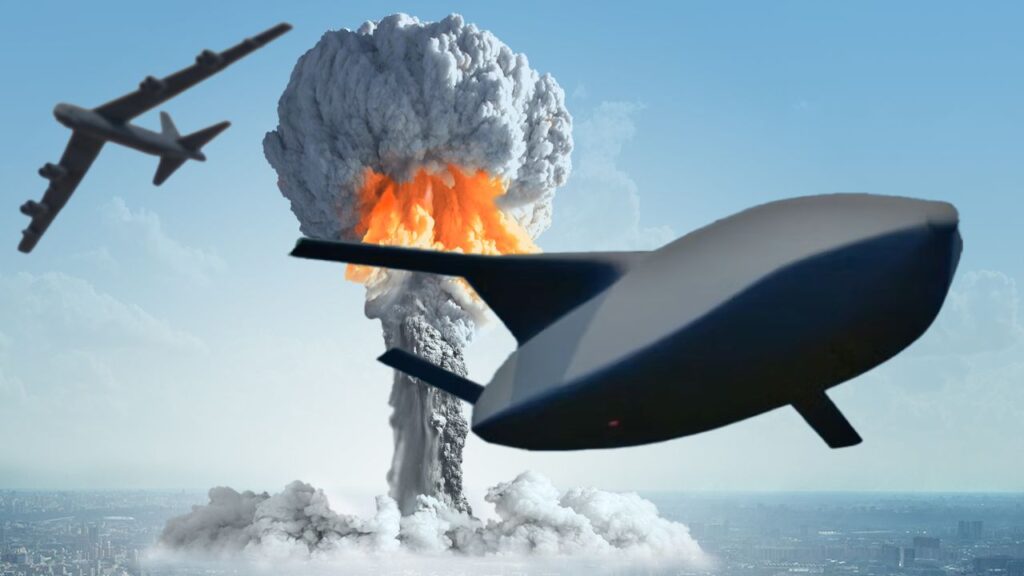
The AGM-181 LRSO missile will modernize America’s nuclear triad
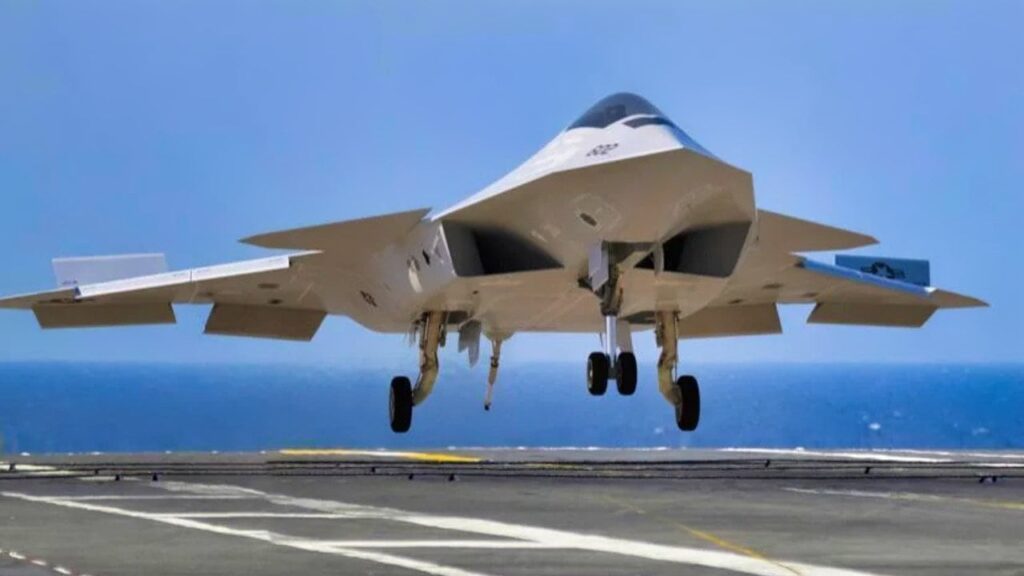
Navy will soon announce the contract award for its F/A-XX 6th-generation jet, according to reports
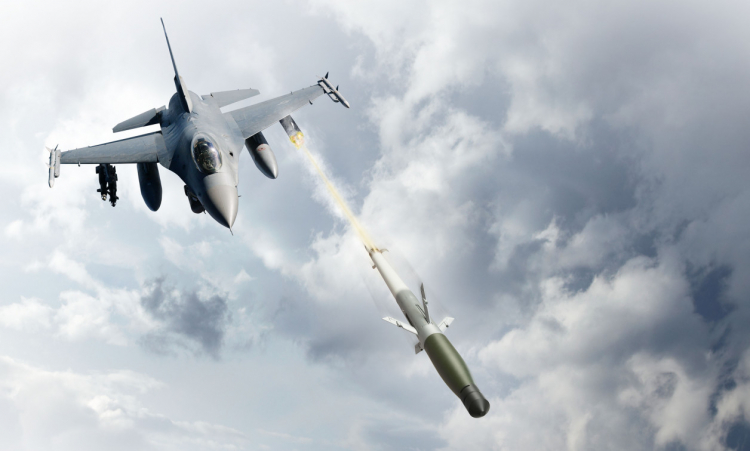
America’s new air-to-air missile is a drone’s worst nightmare
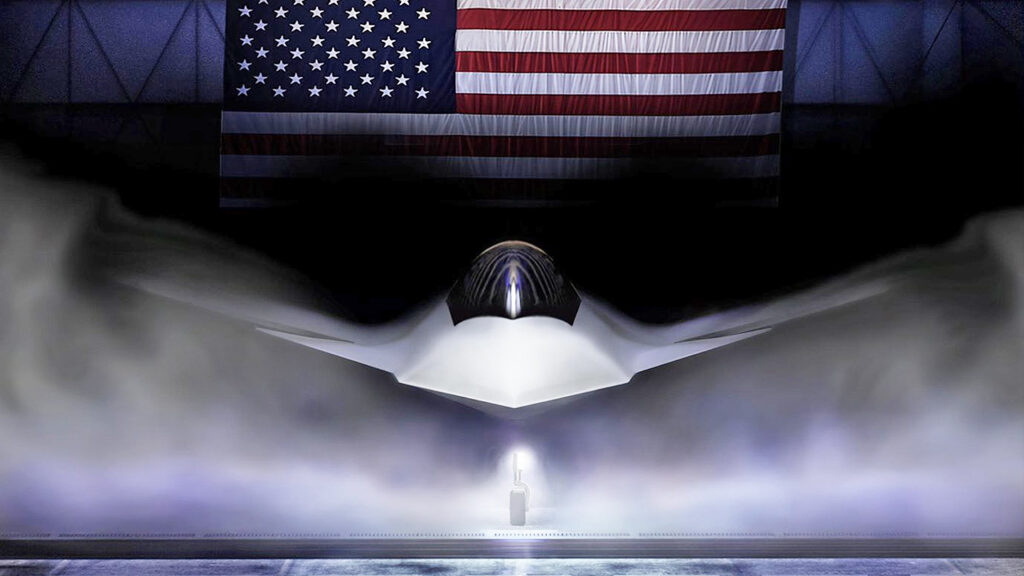
What we can deduce about the Boeing F-47 and its capabilities so far
Sandboxx News
-

‘Sandboxx News’ Trucker Cap
$27.00 Select options This product has multiple variants. The options may be chosen on the product page -

‘AirPower’ Classic Hoodie
$46.00 – $48.00 Select options This product has multiple variants. The options may be chosen on the product page -

‘AirPower’ Golf Rope Hat
$31.00 Select options This product has multiple variants. The options may be chosen on the product page -

‘Sandboxx News’ Dad Hat
$27.00 Select options This product has multiple variants. The options may be chosen on the product page
